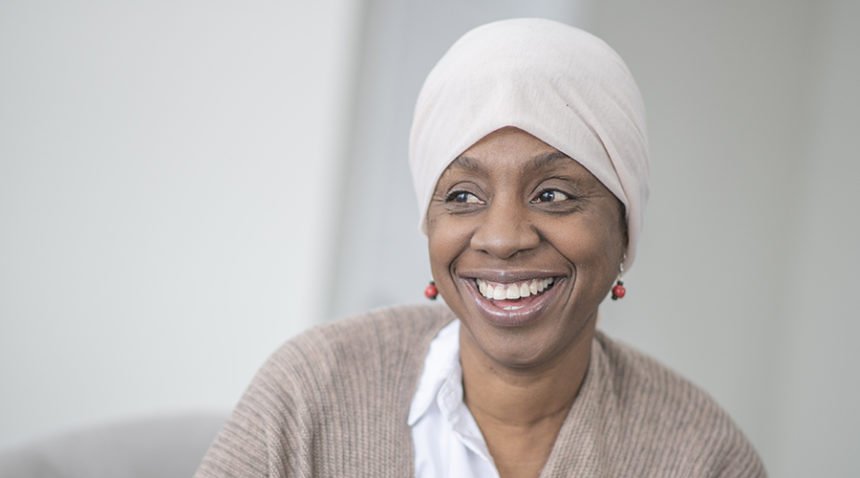Treatment for cancer can be overwhelming under normal circumstances—going through it during the coronavirus disease 2019 (COVID-19) pandemic creates an additional layer of stress and angst for patients and their caregivers. But know this: Hospitals and clinics have established policies and procedures to keep you safe during treatment.
We talked to Hanna Sanoff, MD, MPH, clinical medical director at N.C. Cancer Hospital, about what to expect.
Safeguarding Against COVID-19 During Cancer Treatment
People with cancer may be at an increased risk of illness from infections, including COVID-19, because their immune systems can be weakened by cancer and its treatments. That’s why it’s important that both patients and their caregivers take precautions to lower their risk of getting COVID-19, and that hospitals and clinics enforce strict safety protocols.
These tend to include a limit on the number of people who can accompany or visit patients. Appointments are spaced out so that fewer people are in the waiting rooms and clinics at the same time. In addition, hospitals and clinics are making sure patients are physically distanced during chemotherapy infusion and radiation therapies, and everyone is required to wear a mask.
“We do allow a visitor to come with patients, given the unique needs of cancer patients, but we do everything we can to keep a safe distance between people, whether they be visitors or patients, and in the infusion center, radiation oncology and our waiting rooms,” Dr. Sanoff says.
Doctors are providing virtual care visits when possible.
“We’re doing a lot more virtual care for people who don’t actually physically need to be seen,” Dr. Sanoff says. “If their doctor thinks it’s safe for them to do a video visit instead of coming in, they do that.”
For example, if you live two hours away from your cancer care provider, you may be given the option to have your labs drawn closer to home. The results are then sent to your provider, who will schedule a virtual visit to discuss them and determine if an in-person appointment is necessary.
“It saves you a long drive, and it also helps decrease foot traffic in the cancer hospital,” Dr. Sanoff says. “Because there are fewer people around, it’s easier to be spaced out.”
In some cases, you may have the option to spread out your treatment.
“For example, one of the immunotherapies we give, pembrolizumab, was often given on an every-three-weeks schedule, but in the European Union, it had been said it was effective if given every six weeks. So, the FDA actually supported that (change) in the middle of the COVID pandemic, so people are only having to come in every six weeks for those infusions,” Dr. Sanoff says.
Don’t Put Off Cancer Treatment During COVID-19
Although your provider may determine that you can do some visits virtually, don’t delay treatment without first consulting your cancer care team.
“We feel very strongly that we don’t want people dying of cancer who wouldn’t have died of cancer if the pandemic hadn’t happened,” Dr. Sanoff says. “So our cancer patients are getting aggressive chemotherapies and aggressive radiation, aggressive surgery, whatever we need to do to try and get them the same outcome they would have had regardless.”
Minimize Your Risk Inside and Outside the Clinic
Here are some steps you can take to make it less likely that you’ll catch the virus while undergoing cancer treatment:
- Limit or avoid interactions with anyone outside your immediate family.
- Engage in frequent hand-washing.
- Wear a mask any time you will be around others, and be sure to stay 6 feet apart.
If you’re concerned about your cancer care during the COVID-19 pandemic, talk to your doctor. For the latest information on COVID-19, visit the CDC website and the UNC Health COVID-19 Resources page, and follow UNC Health on Twitter, Facebook, Instagram and YouTube.

